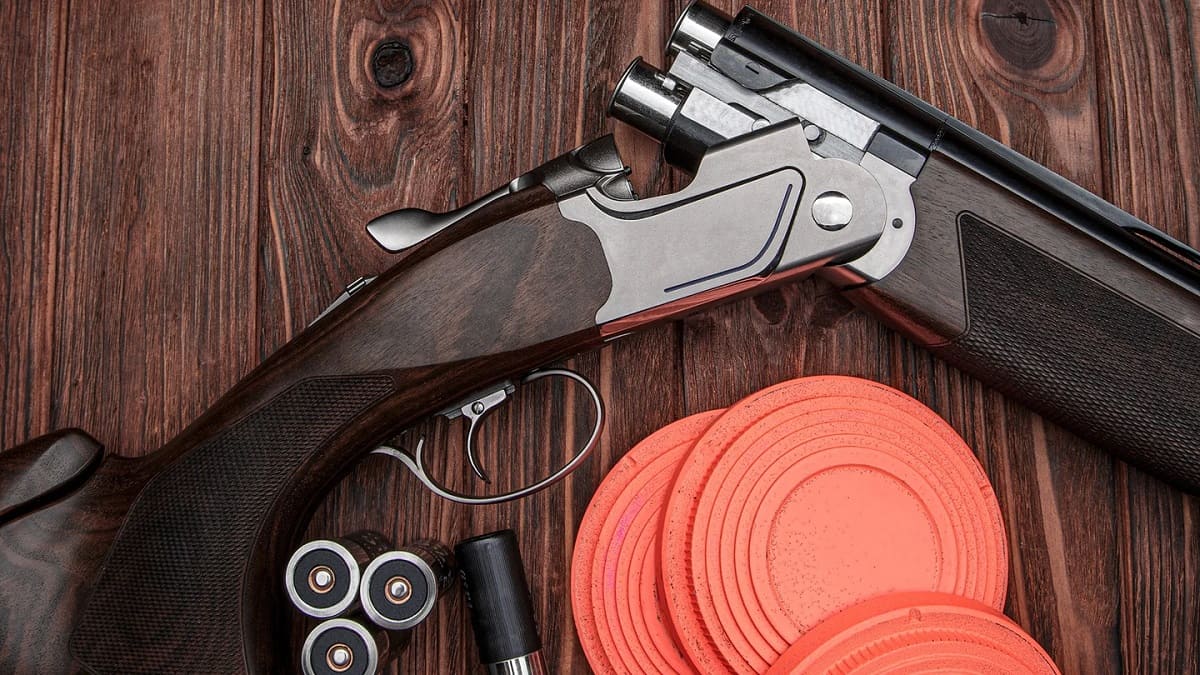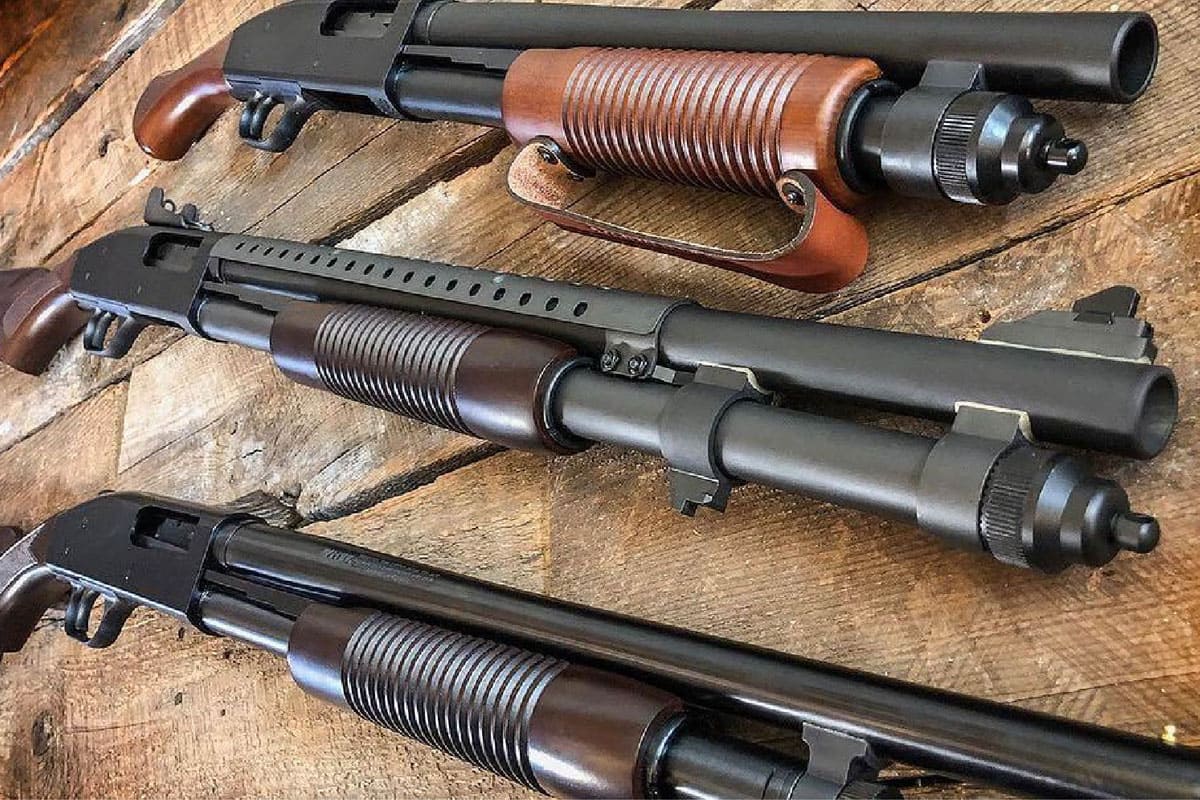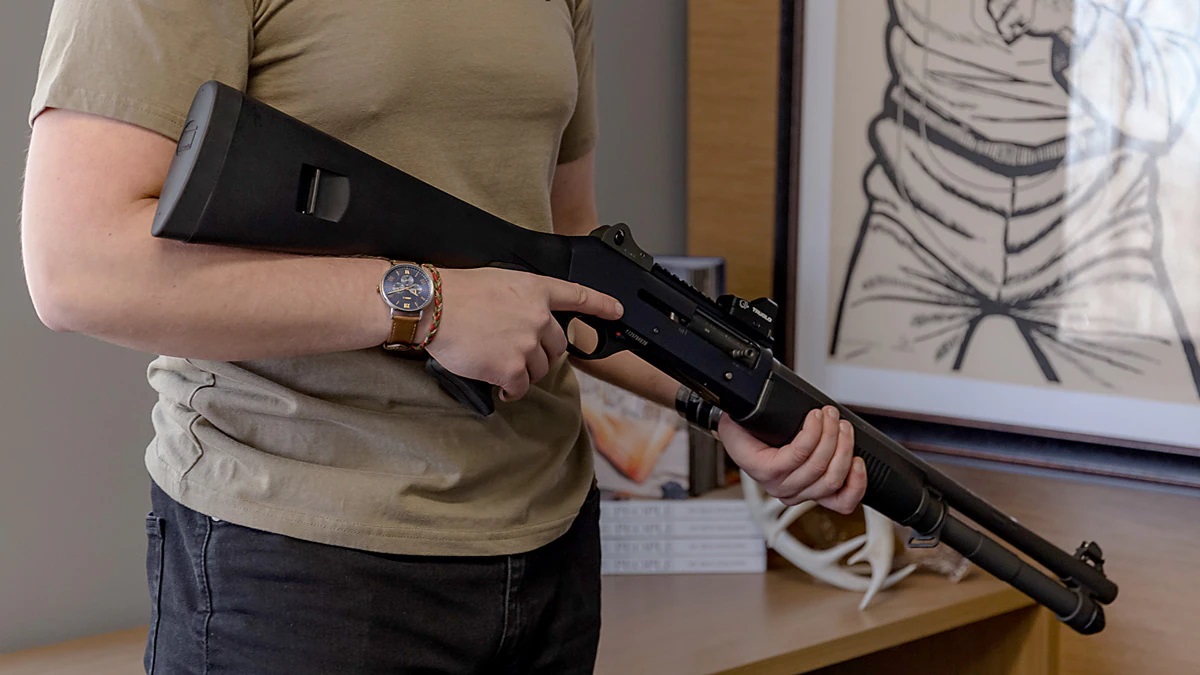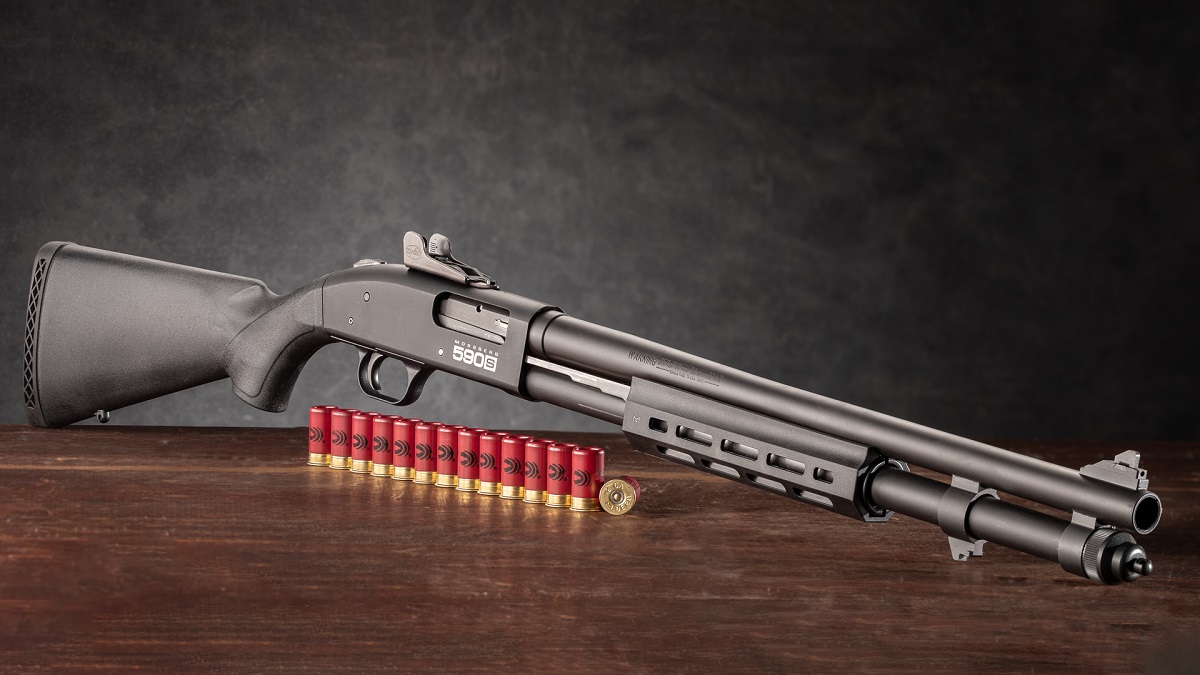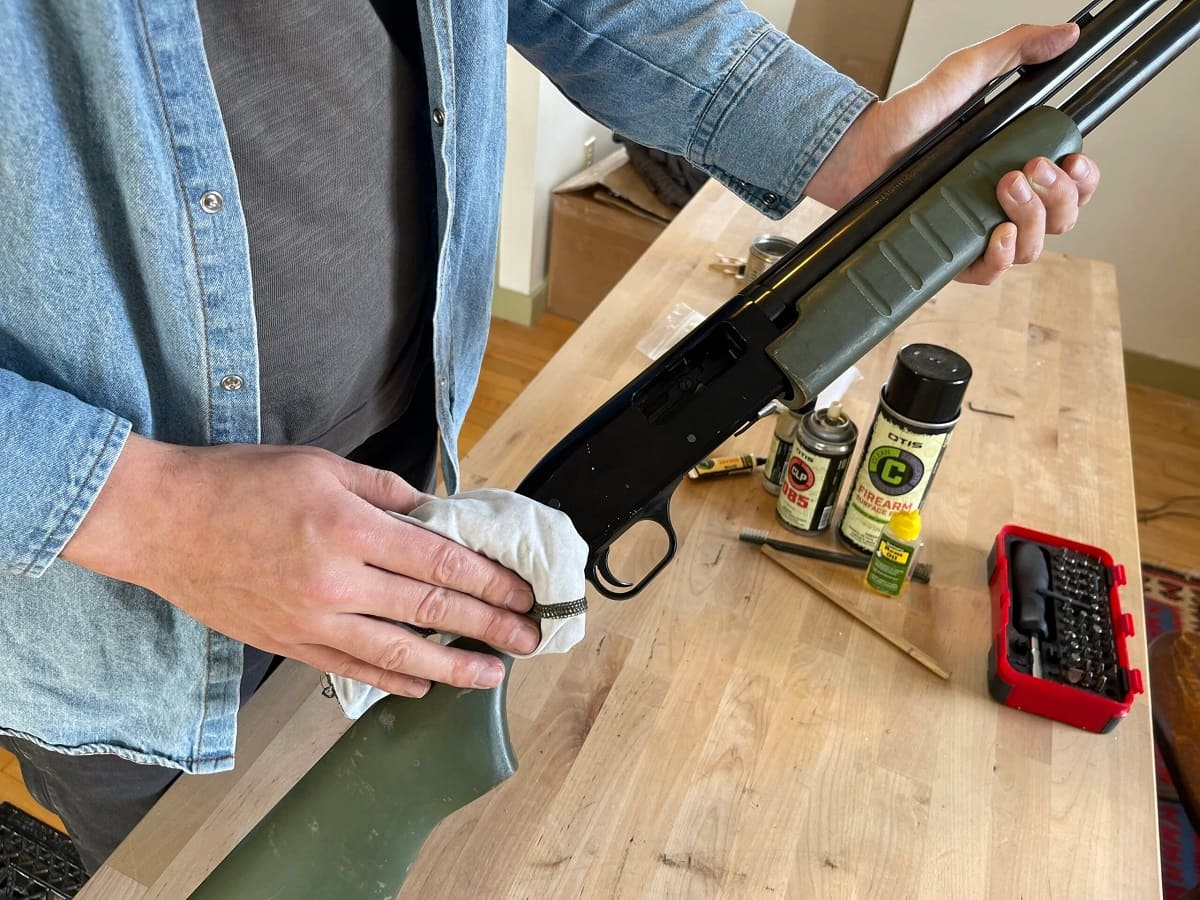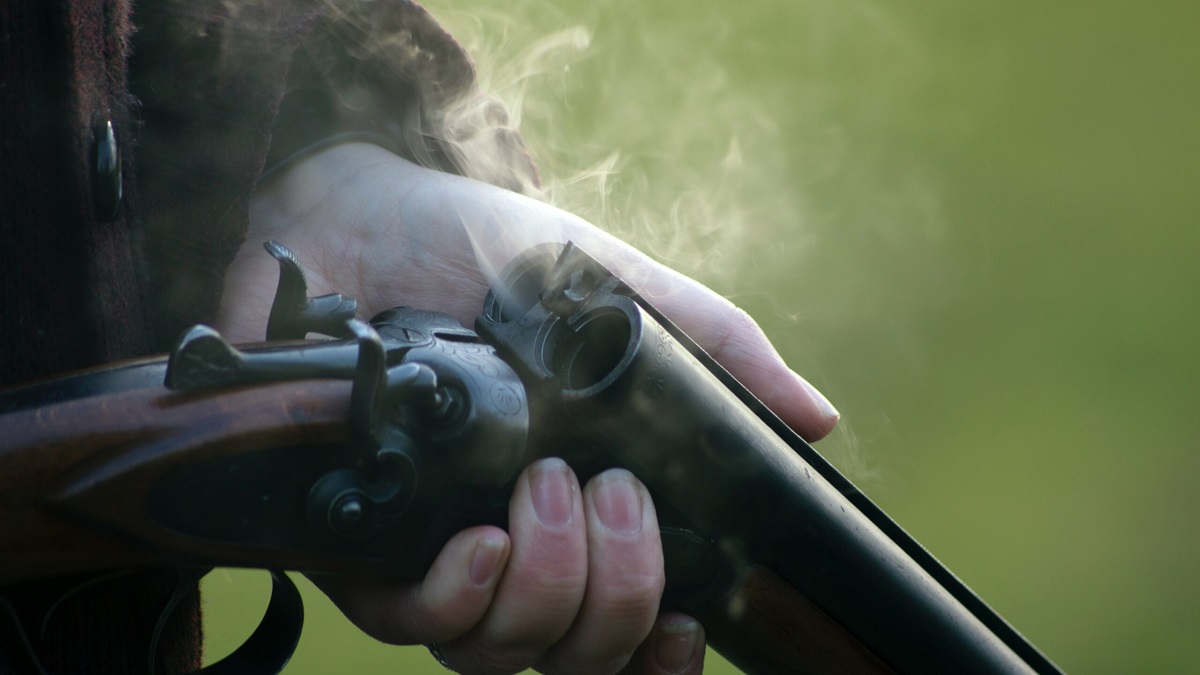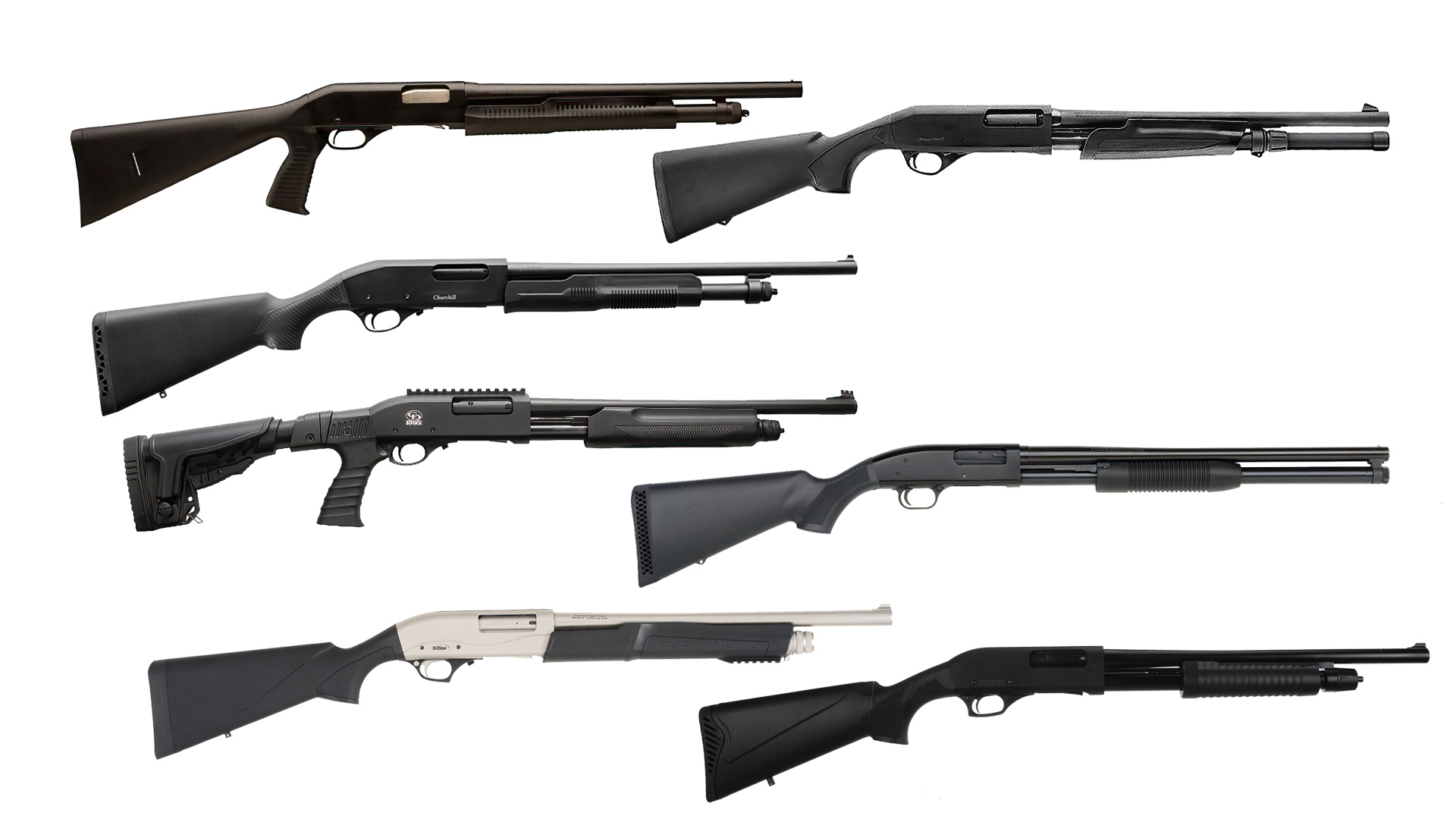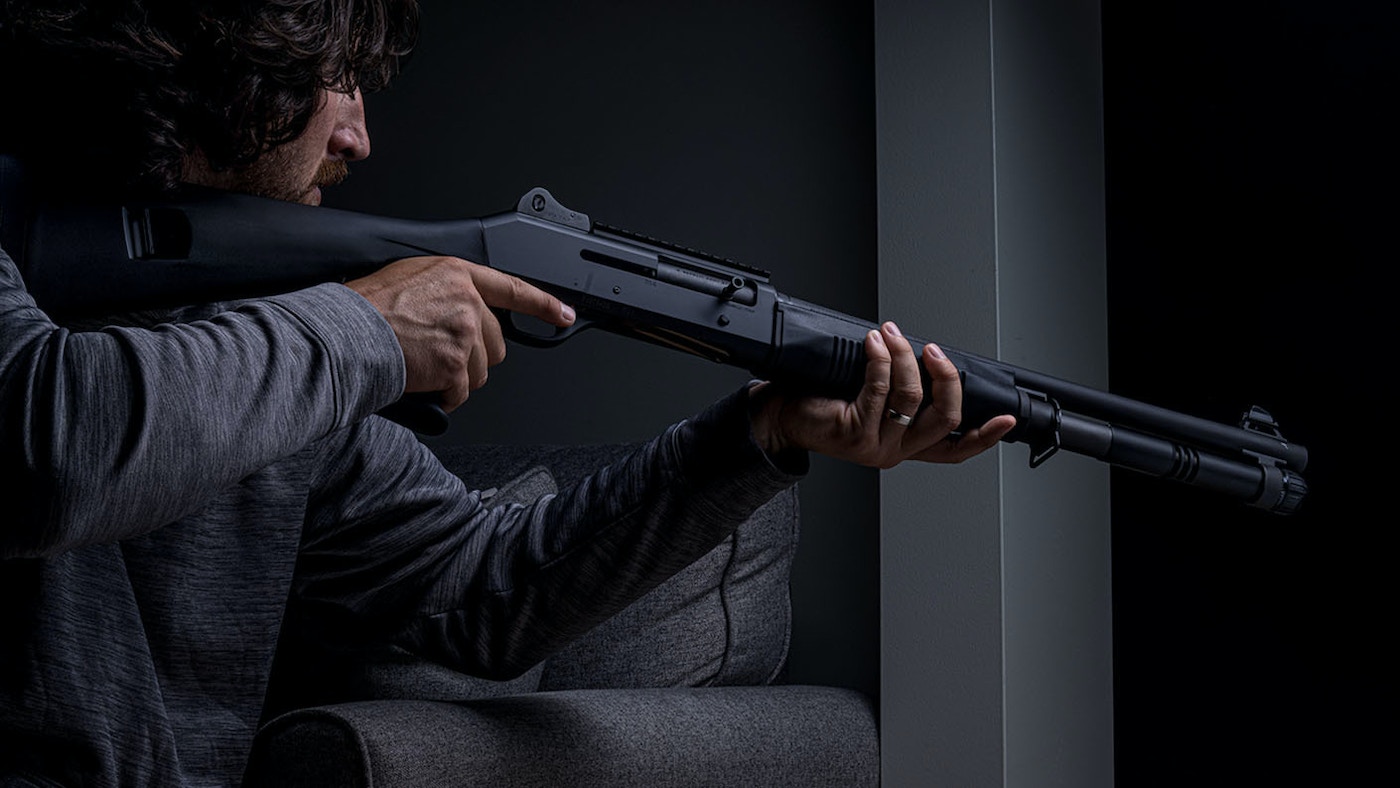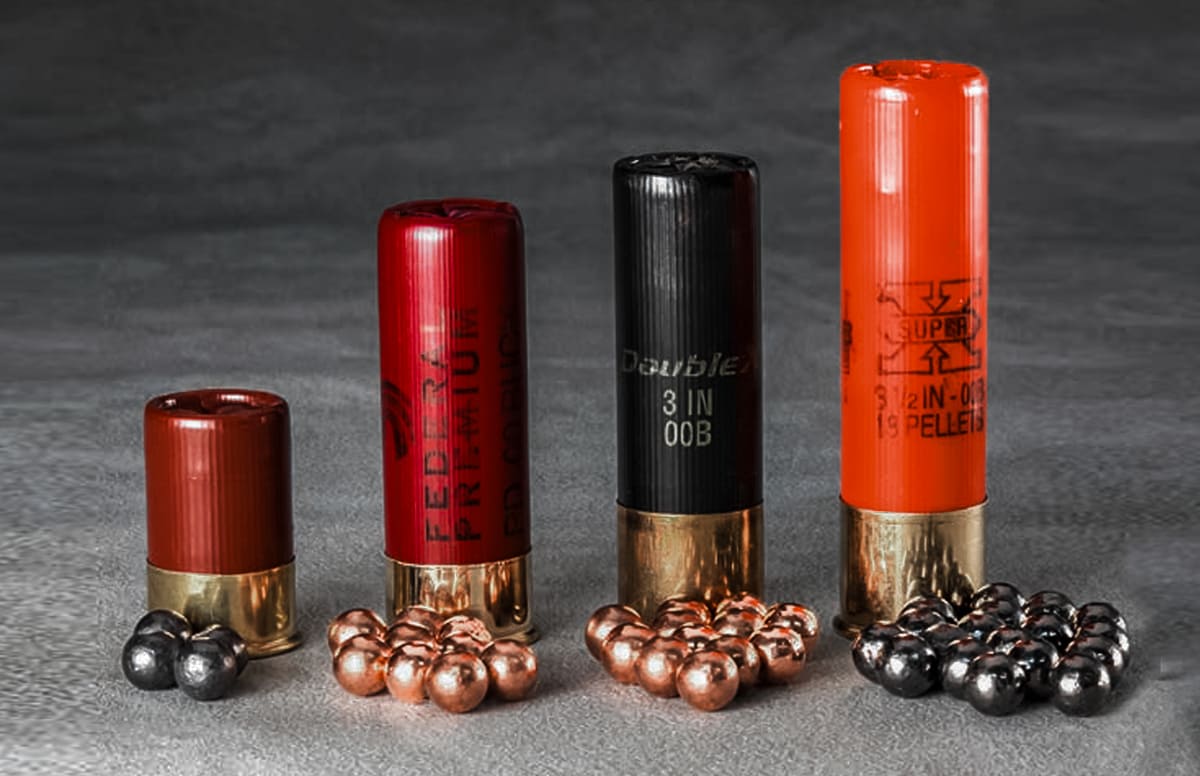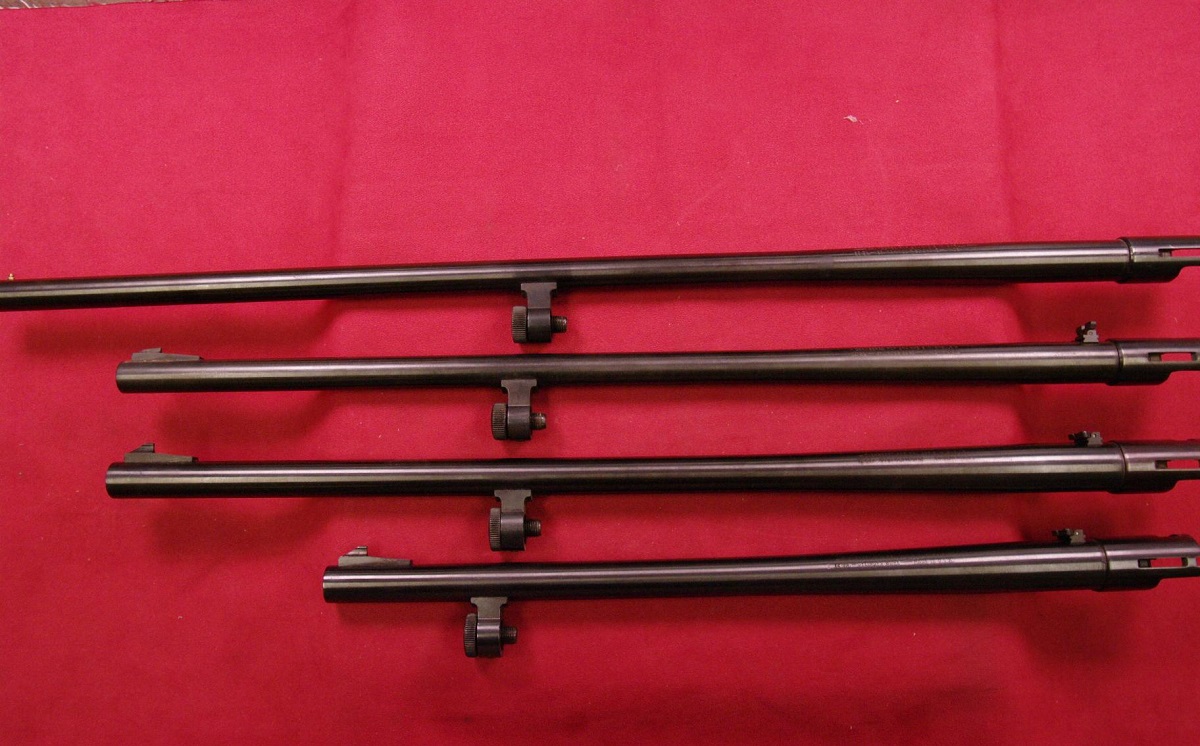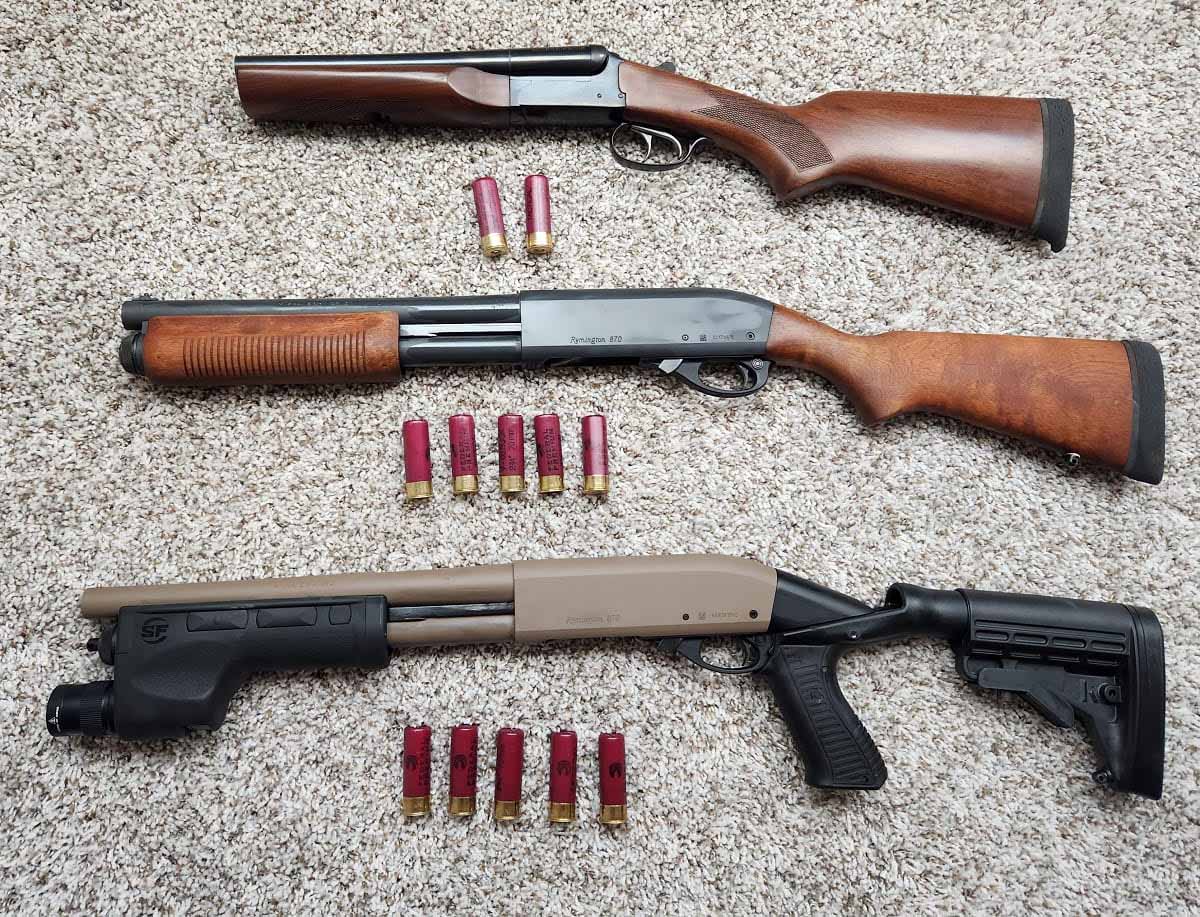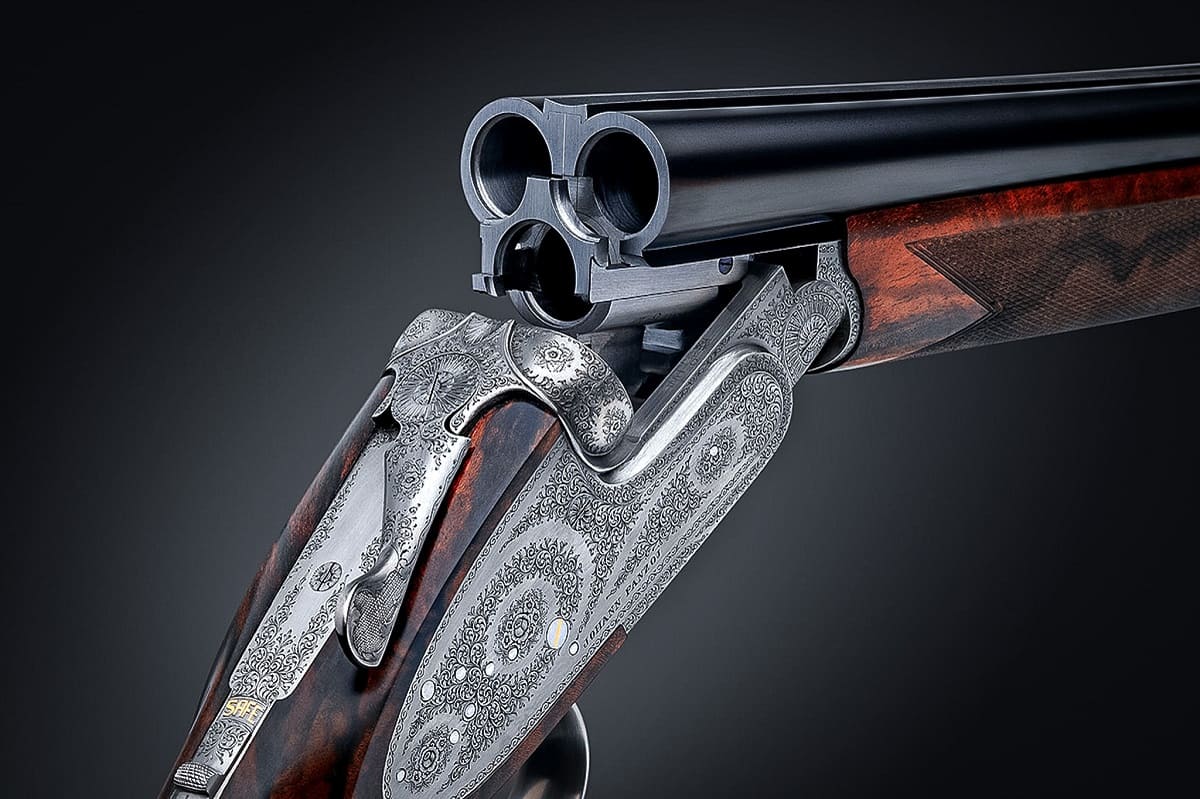Home>Home Security and Surveillance>How To Pick A Shotgun For Home Defense
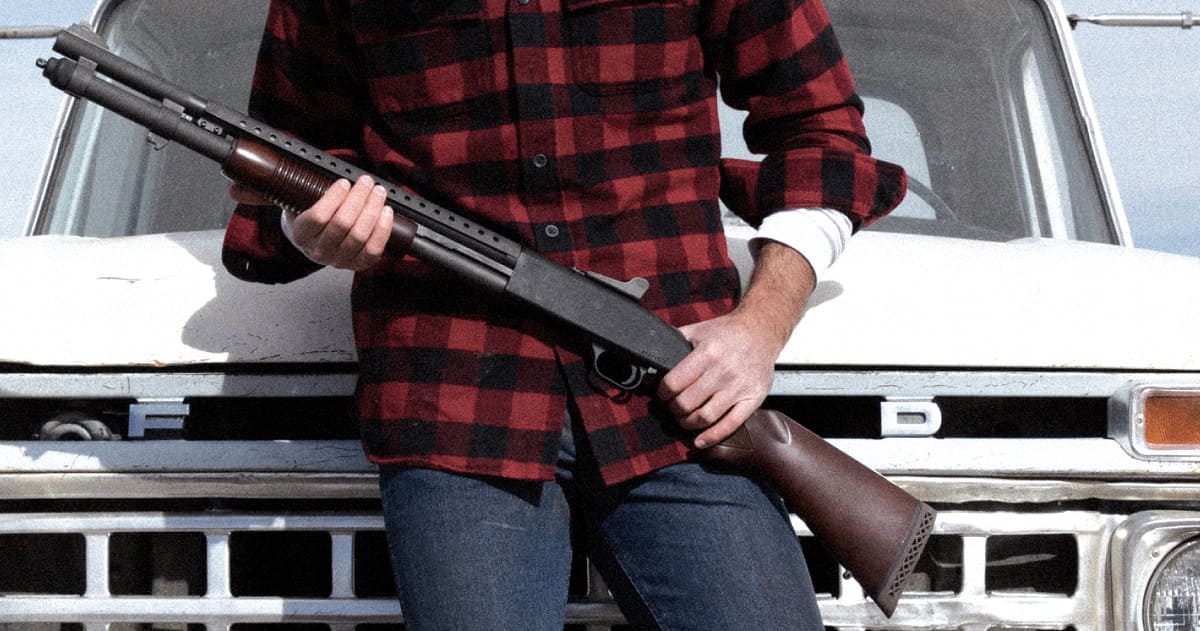

Home Security and Surveillance
How To Pick A Shotgun For Home Defense
Modified: March 6, 2024
Learn how to choose the perfect shotgun for home defense. Enhance your home security and surveillance with our expert tips and recommendations.
(Many of the links in this article redirect to a specific reviewed product. Your purchase of these products through affiliate links helps to generate commission for Storables.com, at no extra cost. Learn more)
Introduction
Welcome to the world of home defense shotguns! When it comes to protecting your home and loved ones, having a reliable and effective firearm is crucial. And one weapon that has stood the test of time and proven its effectiveness is the shotgun.
A shotgun is a versatile firearm that can provide both intimidation and stopping power in self-defense scenarios. Its wide spread of pellets makes it an excellent choice for close-quarters combat, and its ability to use a variety of ammunition types makes it adaptable to various situations.
However, with so many options available on the market, choosing the right shotgun for home defense can be overwhelming. That’s where we come in. In this article, we’ll guide you through the factors to consider when choosing a shotgun, from gauge selection to stock configuration. So let’s dive in!
Key Takeaways:
- Shotguns are versatile and powerful for home defense. Consider factors like gauge selection, action type, and barrel length to choose the right shotgun for your specific needs.
- Accessories like tactical lights and recoil reduction devices can enhance your shotgun for home defense. Choose wisely and practice regularly for confidence in high-pressure situations.
Understanding Home Defense Shotguns
Before we delve into the specifics of choosing a home defense shotgun, let’s take a moment to understand the characteristics that make shotguns an excellent choice for protecting your home.
First and foremost, shotguns are known for their impressive stopping power. The ammunition they use, such as buckshot or slugs, delivers a significant amount of kinetic energy upon impact, which can incapacitate an intruder and prevent further harm. This makes shotguns especially effective in close-quarters situations.
Additionally, shotguns have a distinct advantage when it comes to versatility. They can be loaded with a variety of ammunition types, allowing you to tailor your shotgun to the specific needs of your home defense. From standard buckshot rounds to less-lethal options like rubber pellets or bean bag rounds, shotguns offer a wide range of choices depending on the level of force required.
Furthermore, shotguns have the ability to create a wide pattern of pellets upon discharge, making it easier to hit a target even in high-stress situations. This “spread” gives you a better chance of hitting your target, compensating for any potential aim error or lack of experience in high-pressure scenarios.
Lastly, shotguns offer a psychological deterrent due to their loud noise and imposing appearance. The sound of a shotgun being chambered or fired is often enough to startle and discourage potential intruders.
Overall, shotguns combine power, versatility, and intimidation factor, making them an exceptional choice for home defense. Now, let’s explore the key factors that you should consider when choosing a shotgun for your specific needs.
Factors to Consider When Choosing a Shotgun
When selecting a shotgun for home defense, there are several important factors to keep in mind. Each of these factors contributes to the overall performance and suitability of the shotgun for your specific needs.
1. Gauge Selection: The gauge refers to the diameter of the shotgun’s bore. The most common gauges for home defense shotguns are 12, 20, and .410. A 12-gauge shotgun is the most popular choice, offering a powerful and effective option with a wide range of ammunition available. The 20-gauge is a smaller and lighter alternative with slightly less recoil, making it a good choice for those who prefer a more maneuverable shotgun. The .410 gauge is the smallest option, offering lighter recoil but with reduced stopping power compared to the larger gauges.
2. Action Types: Shotguns come in two main action types: pump-action and semi-automatic. A pump-action shotgun requires manual cycling of the slide to eject and chamber a new round, making it highly reliable and easy to use. Semi-automatic shotguns, on the other hand, automatically cycle the next round with each pull of the trigger, allowing for faster follow-up shots. The choice between the two largely comes down to personal preference and experience.
3. Barrel Length: The length of the shotgun’s barrel can impact both maneuverability and accuracy. Shorter barrels, typically around 18 to 20 inches, offer better maneuverability in tight spaces but can sacrifice some accuracy at longer distances. Longer barrels of 24 inches or more provide improved accuracy but can be more cumbersome to handle in close-quarters situations.
4. Magazine Capacity: The capacity of your shotgun’s magazine is an important consideration. A larger magazine capacity allows for more rounds without the need for reloads, which can be beneficial in high-stress situations. However, it’s important to balance capacity with the overall maneuverability of the shotgun.
5. Stock and Grip Configuration: The stock and grip configuration of your shotgun can greatly impact your comfort and control while shooting. Traditional stocks offer a classic look and feel, while pistol grip stocks provide a more ergonomic grip. Adjustable stocks can be customized to fit individual shooters, ensuring a proper fit and improved handling.
6. Sights and Optics: Shotguns typically come with a simple front bead sight, which is sufficient for close-range engagements. However, some shooters may prefer additional sighting options such as ghost ring sights or red dot optics, which can provide faster target acquisition and enhanced accuracy.
7. Recoil Management: Recoil is a significant consideration when choosing a shotgun, as it can impact your ability to make fast and accurate follow-up shots. Look for shotguns with features like recoil pads or adjustable gas systems that help mitigate recoil and improve shooting comfort.
By carefully considering these factors and understanding how they align with your specific needs and preferences, you can confidently choose a shotgun that will provide reliable and effective home defense.
Gauge Selection: 12, 20, or .410?
One of the key decisions you’ll face when choosing a shotgun for home defense is selecting the appropriate gauge. The gauge refers to the diameter of the shotgun’s bore, and each gauge has its own unique characteristics and advantages. The most common gauges for home defense shotguns are 12, 20, and .410.
12-Gauge: The 12-gauge shotgun is the most popular choice for home defense due to its versatility and availability of ammunition. It offers a wide range of loads, including buckshot and slugs, making it incredibly effective at close-quarter engagements. The 12-gauge has superior stopping power, and its spread of pellets gives you a better chance of hitting your target, compensating for any aim error in high-pressure situations. However, it also generates significant recoil, so it’s important to choose a shotgun with features that help manage the recoil, such as recoil pads or adjustable gas systems.
20-Gauge: The 20-gauge shotgun is a slightly smaller alternative to the 12-gauge. It offers reduced recoil compared to the 12-gauge, making it more manageable for shooters who may be sensitive to recoil or prefer a lighter weight shotgun. Despite its smaller size, the 20-gauge still delivers considerable stopping power, especially when loaded with quality defensive ammunition. It can be an excellent choice for those who prioritize maneuverability without sacrificing too much firepower.
.410-Gauge: The .410-gauge shotgun is the smallest option commonly used for home defense. It fires a smaller and lighter payload, resulting in less recoil and a reduced spread of pellets. While it may not have the same stopping power as the 12 or 20-gauge, it can still be an effective choice, especially for individuals who are not comfortable with or cannot handle the recoil of larger gauges. Additionally, the .410-gauge shotgun can be a viable option for those living in close-quarters environments, where over-penetration is a concern.
Ultimately, the choice of gauge depends on your personal preference, shooting experience, and specific home defense needs. If you prioritize maximum stopping power and are comfortable with managing recoil, the 12-gauge is the popular go-to option. If maneuverability and reduced recoil are important factors, the 20-gauge offers a good balance. And if you prefer a smaller, lighter option with lesser recoil, the .410-gauge may be the right choice for you.
Remember, regardless of the gauge you choose, proper training and practice are essential to become proficient and confident in using your selected shotgun for home defense.
Action Types: Pump vs Semiautomatic
When it comes to home defense shotguns, two common action types dominate the market: pump-action and semiautomatic. Each action type has its own advantages and considerations, so let’s take a closer look at them.
Pump-Action Shotguns: Pump-action shotguns, also known as slide-action shotguns, are operated by manually cycling the forearm to eject the spent round and chamber a new one. This action type has been widely favored for home defense due to its reliability and simplicity. Pump-action shotguns have fewer moving parts compared to semiautomatics, meaning they are less likely to experience malfunctions or failures to cycle. This makes them extremely dependable and easy to maintain, which is especially important in high-stress situations.
Another advantage of pump-action shotguns is their ability to shoot a wide variety of ammunition types reliably. This includes specialty rounds like less-lethal options or low recoil loads, which can be beneficial when considering the potential for collateral damage in a home-defense scenario.
However, pump-action shotguns require manual action to cycle the rounds, which may be slower compared to the automatic cycling of semiautomatic shotguns. This can affect the rate of fire and the ability to quickly engage multiple targets. Additionally, the pumping action can require more physical effort, which may be a consideration for individuals with limited strength or mobility.
Semiautomatic Shotguns: Semiautomatic shotguns, commonly referred to as auto-loading shotguns, automatically cycle the next round with each pull of the trigger. This allows for faster follow-up shots without the need to manually operate the shotgun. The semi-automatic action provides a rapid rate of fire, making it advantageous in scenarios that require quick target acquisition or multiple engagements.
In terms of recoil management, semiautomatic shotguns generally have softer recoil compared to pump-action shotguns. This is because the gas or recoil-operated systems of semi-automatics absorb and redirect some of the recoil energy, resulting in reduced felt recoil. This can be beneficial for shooters who are sensitive to recoil or for extended shooting sessions.
However, semiautomatic shotguns can be more complex and have more moving parts, which can increase the likelihood of malfunctions if not properly maintained. Regular cleaning and maintenance are essential to ensure the reliable functioning of a semiautomatic shotgun.
Ultimately, the choice between a pump-action or semiautomatic shotgun for home defense comes down to personal preference and comfort level. If reliability and simplicity are your priorities, a pump-action shotgun may be the ideal choice. If faster follow-up shots and softer recoil are important to you, a semiautomatic shotgun may be the better option. Whichever action type you choose, be sure to practice and become familiar with your chosen shotgun to maximize your effectiveness in a home defense scenario.
Read more: How To Load A Shotgun For Home Defense
Barrel Length: Short or Long?
When deciding on a shotgun for home defense, the length of the barrel is an important consideration. The barrel length affects both maneuverability and accuracy, so it’s essential to understand the implications of choosing a short or long barrel for your specific needs.
Short Barrel: Shotguns with shorter barrels, typically around 18 to 20 inches, are favored for home defense due to their increased maneuverability in tight spaces. A shorter barrel allows for better maneuvering around corners, narrow hallways, and other confined areas within your home. The compact size makes it easier to handle and navigate, especially in high-stress situations.
Furthermore, a shorter barrel can offer faster target acquisition and pointability, enabling quicker reaction times. This can be crucial when facing an intruder or in self-defense scenarios where every second counts.
However, it’s important to note that shorter barrels may sacrifice some accuracy at longer distances. The shorter sight radius and potential for increased muzzle rise can make precise aiming more challenging. If long-range accuracy is a priority for your home defense needs, a longer barrel may be a better choice.
Long Barrel: Shotguns with longer barrels, usually ranging from 24 to 30 inches, are often associated with improved accuracy and extended range. The longer sight radius provided by a longer barrel can enhance your ability to aim and shoot accurately, especially at greater distances. This can be advantageous in scenarios where engagements may happen outside the typical close-quarters range.
Moreover, the extra barrel length can help reduce muzzle rise and recoil, resulting in smoother shooting and quicker follow-up shots. This can be beneficial for maintaining control and accuracy during rapid fire or engaging multiple targets.
However, longer barrels can be less maneuverable in tight spaces. They may feel more cumbersome and might pose challenges when navigating through hallways or corners. It’s important to consider the layout of your home and the potential need for close-quarters engagements when deciding on a long-barrel shotgun for home defense.
Ultimately, the choice between a short or long barrel depends on your specific home defense requirements and personal preferences. If you prioritize maneuverability and close-quarters effectiveness, a short-barrel shotgun may be the optimal choice. If long-range accuracy and extended reach are more important to you, a long-barrel shotgun can provide the desired benefits. Remember to consider both the advantages and trade-offs of each option to select the barrel length that best suits your needs.
Look for a shotgun with a shorter barrel (18-20 inches) for maneuverability in tight spaces, and a capacity of at least 4 rounds.
Magazine Capacity: Capacity vs Maneuverability
When choosing a shotgun for home defense, one important factor to consider is the magazine capacity. The number of rounds a shotgun can hold in its magazine can significantly impact your ability to handle a potential threat effectively. However, it’s crucial to strike a balance between capacity and maneuverability to ensure optimal performance in a home defense scenario.
Capacity: A shotgun with a higher magazine capacity allows you to have more rounds readily available without the need for frequent reloads. This can be advantageous in situations where multiple intruders are involved or where you may need to engage threats for an extended period of time without a break.
The capacity of a shotgun’s magazine can vary depending on the specific make and model, typically ranging from 4 to 8 rounds. Some shotguns also offer the option to extend the magazine capacity through aftermarket accessories.
However, it’s essential to consider the overall weight and size of a shotgun with a larger magazine capacity. As the number of rounds increases, so does the weight of the loaded shotgun, which can impact maneuverability and the ability to swiftly move and navigate through your home.
Maneuverability: Home defense scenarios often require quick movements and navigation in tight spaces, such as hallways, staircases, or rooms with limited visibility. In these situations, a compact and maneuverable shotgun provides significant advantages.
Shotguns with a shorter overall length, lightweight construction, and a reduced number of rounds in the magazine can enhance your ability to move swiftly and effectively. This can be crucial for getting into position, acquiring targets, and responding to threats in a timely manner.
Furthermore, a compact shotgun can be easier to handle in high-stress situations, allowing for improved control and faster target acquisition. This can be particularly important when you need to react quickly and accurately to protect yourself and your loved ones.
In the end, it’s a trade-off between capacity and maneuverability. It’s important to assess your specific home defense needs and consider the layout of your home. If you anticipate a potential need for extended engagements or multiple threats, a higher capacity magazine might be beneficial. On the other hand, if maneuverability is a top priority, a shotgun with a smaller magazine capacity can offer the agility you need.
Remember, practice reloading your shotgun efficiently and consider having additional shotgun shells readily available in case you need to reload during a home defense situation. By balancing capacity and maneuverability, you can choose a shotgun that fits your individual needs and ensures optimal performance in a home defense scenario.
Stock and Grip Configuration: Traditional vs Pistol Grip
When selecting a shotgun for home defense, one crucial aspect to consider is the stock and grip configuration. The stock and grip play a significant role in your comfort, control, and overall shooting experience. Two common options are the traditional stock and the pistol grip, each offering distinct advantages and considerations.
Traditional Stock: The traditional stock is the classic design found on most shotguns. It consists of a shoulder stock that extends to a buttplate, providing a solid contact point with your shoulder. This configuration offers several benefits for home defense.
Firstly, the traditional stock provides a firm and stable shooting platform. With the stock pressed against your shoulder, you can better manage recoil, allowing for quicker follow-up shots and increased accuracy. This stability can be critical in high-stress situations where shot placement is essential for stopping a threat effectively.
Additionally, the traditional stock allows for a more natural shooting position. It aligns your eye with the shotgun’s sights, promoting better target acquisition and improved accuracy. This can be particularly important when engaging targets at various distances within your home.
The traditional stock also provides a consistent and comfortable grip. The shape and design of the stock allow for a secure hold, giving you better control and maneuverability. This is especially beneficial during movement and quick transitions between targets.
Pistol Grip: The pistol grip configuration differs from the traditional stock by replacing the shoulder stock with a grip similar to that found on a handgun. The pistol grip offers its own set of advantages, appealing to certain shooters for home defense purposes.
One major advantage of the pistol grip is its compactness. The absence of the shoulder stock makes the shotgun more maneuverable in confined spaces, such as hallways or tight corners. This can be crucial when navigating through your home in a high-pressure situation.
The pistol grip also allows for a more ergonomic and natural grip position. It can provide a firm grip, promoting better control and handling of the shotgun. This can be particularly useful for shooters with smaller hands or those who feel more comfortable with a pistol grip due to previous firearms experience.
However, it is important to note that the pistol grip configuration can increase perceived recoil due to the lack of a shoulder stock. The absence of a solid contact point against your shoulder can make the shotgun’s recoil feel more pronounced, potentially affecting your ability to make rapid follow-up shots accurately.
Furthermore, the pistol grip may make it more challenging to aim and acquire targets compared to a traditional stock. Without the shoulder stock to press against your shoulder, it may be more difficult to maintain a stable shooting platform and align your eye with the shotgun’s sights effectively.
In the end, the choice between a traditional stock and a pistol grip configuration largely comes down to personal preference, comfort, and shooting style. It is recommended to handle and test both options if possible to determine which configuration feels most natural and provides optimal control for you as an individual.
Remember, proficiency with your chosen stock and grip configuration is essential, so regular practice and training are recommended to develop your shooting skills and familiarize yourself with the specific characteristics of your chosen shotgun.
Sights and Optics: Bead Sight, Ghost Ring, or Red Dot?
When it comes to home defense shotguns, having reliable sights or optics can greatly enhance your accuracy and target acquisition. While shotguns generally have a simple sighting system, there are several options to consider, including bead sights, ghost ring sights, and red dot optics.
Bead Sight: The bead sight is the most basic and commonly found sight on shotguns. It consists of a small metal or plastic bead at the end of the shotgun’s barrel. While simple in design, bead sights can be effective for close-range engagements.
Bead sights allow for a quick and intuitive sight picture. The shooter aligns the bead with the target, focusing on the target rather than the sight itself. The simplicity of the bead sight makes it inherently fast and suitable for rapid target acquisition.
However, bead sights have limitations, especially in low-light conditions or when engaging targets at longer distances. They lack the precision and aiming reference provided by more advanced sighting systems. Additionally, in high-stress situations, it can be more challenging to acquire and maintain a clear sight picture, potentially affecting accuracy.
Ghost Ring Sight: Ghost ring sights consist of a rear sight with a large aperture and a smaller front sight post. This configuration allows for faster target acquisition and improved accuracy compared to a simple bead sight.
The larger rear aperture of a ghost ring sight increases the shooter’s field of view, making it easier to quickly locate and track targets. The smaller front sight post helps to refine the sight picture and provide a clearer aiming point. This combination allows for better accuracy, especially at slightly longer distances.
Ghost ring sights also perform better in low-light conditions. The larger aperture gathers more available light, enhancing visibility and making it easier to acquire targets in dimly lit environments. These sights can be a good compromise between speed and accuracy.
Red Dot Optics: Red dot optics offer a more advanced sighting system for shotguns. These optics project a red dot or reticle onto a lens, allowing for quick and precise target acquisition.
Red dot optics provide several advantages for home defense shotguns. The illuminated red dot provides a clear and crisp aiming point that is easy to acquire and track, especially for shooters with astigmatism or aging eyes. The unlimited eye relief allows for flexible head position without sacrificing the sight picture.
Red dot optics also offer the benefit of parallax-free shooting, meaning the reticle stays on target regardless of the shooter’s eye position. This helps to mitigate errors caused by imperfect eye placement, ensuring accurate shot placement under stress.
However, it’s important to note that red dot optics can add cost, weight, and potential reliability concerns to your shotgun. It’s recommended to choose a durable and proven optic specifically designed for shotgun use to ensure reliability.
Ultimately, the choice of sight or optic depends on your shooting preferences, experience, and intended use for your shotgun. Bead sights are simple and fast, ghost ring sights offer a balance between speed and accuracy, while red dot optics provide fast target acquisition and precision especially in low-light conditions. Consider your home defense needs and prioritize quick target acquisition and accuracy when making your selection.
Read more: How To Load .410 Home Defense Shotgun
Recoil Management: Stock Design and Recoil Pad
Recoil, the backward movement of a firearm upon firing, is a significant factor to consider when selecting a shotgun for home defense. Managing recoil effectively not only improves your shooting comfort but also allows for quicker follow-up shots, increased accuracy, and reduced fatigue. Two key components that contribute to recoil management are the stock design and recoil pad.
Stock Design: The stock of a shotgun plays a crucial role in managing recoil and providing stability during firing. The design and material of the stock can greatly affect the felt recoil and shooting comfort.
A traditional stock design, often made of wood or synthetic materials, provides a solid and consistent contact point against your shoulder. This contact helps to absorb and distribute the recoil forces, reducing the impact felt by the shooter. The shape and contour of the stock, including the comb and grip, allow for a comfortable and secure hold, promoting better control and stability.
Modern stock designs may incorporate features to further enhance recoil management. Some shotguns have adjustable stocks, allowing you to customize the length of pull or even the angle of the stock to better fit your body and shooting style. Adjustable stocks can optimize shoulder contact and help reduce felt recoil by improving the stock-to-shoulder fit.
Pistol grip stocks, on the other hand, provide a different grip configuration that may or may not include the traditional shoulder stock. While pistol grips can offer a more ergonomic grip, they may provide less contact surface against the shoulder, potentially increasing the felt recoil. It’s important to consider your recoil tolerance and shooting preferences when evaluating different stock designs.
Recoil Pad: The recoil pad, located at the rear of the shotgun’s stock, serves as a cushion between the stock and your shoulder. It helps to soften and distribute the recoil forces, minimizing the impact felt by the shooter.
Recoil pads are typically made of materials like rubber or gel, designed to absorb and dissipate recoil energy. The thickness and density of the recoil pad can have a significant impact on felt recoil reduction. Thicker and softer recoil pads tend to provide greater cushioning and absorption, resulting in reduced felt recoil.
In addition to reducing recoil, recoil pads can also improve shooting comfort. They help to minimize the transfer of energy from the shotgun to your shoulder, reducing the likelihood of bruising or discomfort during prolonged shooting sessions.
Some shotguns come with removable recoil pads, allowing you to easily swap them out for pads of different thicknesses or materials to customize your shotgun’s recoil characteristics to your personal preference.
When selecting a shotgun for home defense, it’s important to consider the stock design and recoil pad as they directly influence your shooting experience and comfort. Choose a stock design that provides a solid shoulder contact point and a comfortable grip. Additionally, select a recoil pad that effectively absorbs recoil energy to reduce felt recoil. By effectively managing recoil, you can shoot more comfortably and accurately, improving your overall performance in a home defense scenario.
Accessories and Modifications for Home Defense Shotguns
When it comes to home defense shotguns, there are a variety of accessories and modifications available to enhance their functionality and tailor them to your specific needs. These accessories can improve weapon handling, increase accuracy, and optimize your shotgun for home defense scenarios. Here are some popular options to consider:
1. Tactical Light: A weapon-mounted light is a crucial accessory for home defense shotguns. It provides illumination in low-light environments, helping to identify potential threats and navigate through your home safely. Look for a light with a high lumen output and easy activation controls.
2. Side Saddle Shell Holder: A side saddle shell holder is designed to attach to the side of the shotgun’s receiver, providing quick and easy access to additional rounds. This allows you to reload without reaching for a spare ammo stash, ensuring you have more rounds readily available during a home defense situation.
3. Extended Magazine Tube: For shotguns with detachable magazine tubes, an extended magazine tube can increase the shotgun’s capacity by adding more rounds without sacrificing maneuverability. However, it’s important to check local regulations regarding magazine capacity limitations.
4. Sling: A sling allows you to comfortably carry your shotgun and provides a way to secure the weapon while keeping your hands free. A two-point or single-point sling can be selected based on your preferred carry style and accessibility needs.
5. Fiber Optic or Tritium Night Sights: Upgrading your shotgun’s sights to fiber optic or tritium night sights can significantly improve low-light visibility and target acquisition. These sights provide bright, contrasting dots that are easily visible in dark or low-light conditions.
6. Choke Tubes: Choke tubes allow you to modify the spread pattern of the shotgun’s pellets, providing flexibility depending on the specific home defense scenario. A cylinder bore or improved cylinder choke tube can offer a wider spread for close-quarters situations, while a modified or full choke can provide tighter patterns for longer-range engagements.
7. Recoil Reduction Devices: Recoil reduction devices, such as recoil pads or muzzle brakes, can help mitigate recoil and improve shooter comfort. These accessories absorb and redirect recoil energy, reducing the felt recoil and allowing for faster follow-up shots.
8. Red Dot or Holographic Optics: Red dot or holographic optics provide a quick and precise aiming point, allowing for rapid target acquisition. These optics offer flexible eye relief and unlimited eye placement, ensuring a consistent sight picture and increased accuracy in various shooting positions.
It’s important to note that when modifying or adding accessories to your shotgun, reliability and functionality should be the primary concerns. Ensure that any modifications are performed by a qualified gunsmith to maintain the integrity of the firearm and comply with applicable laws and regulations.
Remember, accessories and modifications should be selected based on personal preference and individual requirements. Assess your specific home defense needs, consider your shooting style, and seek professional assistance to customize your shotgun accordingly. With the right accessories and modifications, you can optimize your shotgun for home defense and increase your confidence in its performance when it matters most.
Conclusion
Choosing the right shotgun for home defense is a significant decision that requires careful consideration of several factors. By understanding the important aspects of home defense shotguns and evaluating your specific needs, you can make an informed choice that ensures the safety and well-being of yourself and your loved ones.
From gauge selection to stock design, each decision contributes to the overall effectiveness and suitability of your chosen shotgun. The gauge you select, whether it’s 12, 20, or .410, determines the stopping power and recoil you’ll experience. The action type, whether it’s a pump-action or semiautomatic, offers different advantages in terms of reliability and rate of fire.
The barrel length and magazine capacity should be considered in terms of maneuverability and the ability to handle potential threats effectively. The stock and grip configuration, whether traditional or pistol grip, impact your comfort and control when shooting. Sights and optics, such as bead sights, ghost ring sights, or red dot optics, enhance your accuracy and target acquisition.
Recoil management is crucial, and selecting a shotgun with an appropriate stock design and recoil pad helps mitigate felt recoil and supports faster follow-up shots. Additionally, incorporating accessories and modifications such as tactical lights, side saddle shell holders, or extended magazine tubes can further optimize your shotgun for home defense.
In the end, it’s important to choose a shotgun that aligns with your personal preferences, shooting abilities, and home defense needs. Consider factors such as the layout of your home, potential threats, and the level of comfort and control you desire.
Once you’ve selected the right shotgun, it’s essential to become proficient with it through regular training and practice. Familiarize yourself with its operation, recoil characteristics, and any additional features or modifications. With proper training and practice, you can confidently handle and deploy your chosen shotgun in a home defense scenario.
Remember, safety is paramount, so always follow proper firearms safety protocols, store your shotgun securely, and ensure everyone in your household understands and respects firearm safety rules.
By taking the time to choose a suitable shotgun and investing in the necessary training, you can gain peace of mind knowing that you have a reliable and effective tool for protecting yourself and your home in potential life-threatening situations.
Frequently Asked Questions about How To Pick A Shotgun For Home Defense
Was this page helpful?
At Storables.com, we guarantee accurate and reliable information. Our content, validated by Expert Board Contributors, is crafted following stringent Editorial Policies. We're committed to providing you with well-researched, expert-backed insights for all your informational needs.
